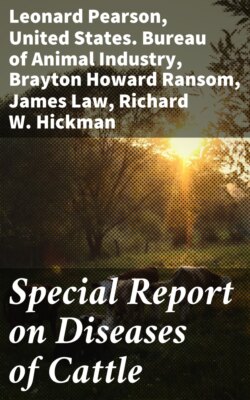Читать книгу Special Report on Diseases of Cattle - Lowe - Страница 110
На сайте Литреса книга снята с продажи.
ENDOCARDITIS.
ОглавлениеWhen the membrane which lines the cavities of the heart—the endocardium— suffers inflammation, the disease is called endocarditis. The cause is another disease, during which substances that irritate the lining of the heart are produced and admitted into the circulation. These substances are usually living organisms, or it is possible that in some cases they are chemical irritants. Endocarditis occurs as a complication of or sequel to pneumonia, blood poisoning, inflammation of the womb, rheumatism, or severe wounds or abscesses. The symptoms are much the same as those of pericarditis, and it is difficult to discriminate between the two affections. There is a jugular pulse, the legs may become dropsical, and there is a tendency to faint if the head is elevated suddenly. The bellowslike sound is more distinct than it is in pericarditis. It is the most fatal of heart diseases, because of the liability of the formation of clots, which may adhere to the valves, change in the structure of the valves, and often a complication with an abnormal condition of the blood. Clots may be formed in the heart, and, being carried to other parts, prove fatal by interrupting the circulation in some vital organ.
Treatment similar to that advised for myocarditis may be followed in this disease.
